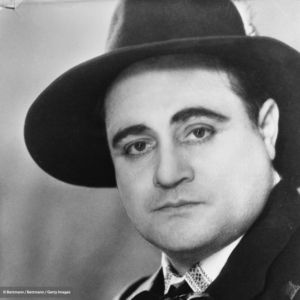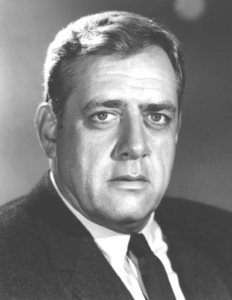Selectmen act on preliminary review of revised marijuana ordinance
 by Mary Grow
by Mary Grow
At a well-attended virtual meeting Jan. 7, Vassalboro selectmen did a preliminary review of a thoroughly revised town marijuana ordinance; followed up with the second of two major road projects; and discussed issues raised by Conservation Committee members.
They are asking for more comments on the draft Marijuana Ordinance, to be submitted by Friday, Jan. 15 (the town office is open from 8 a.m. to noon on Fridays) so board members can review them before their Jan. 21 meeting. Town Manager Mary Sabins offered her email address to receive comments, msabins@vassalboro.net.
The proposed ordinance is available on the Vassalboro website, www.vassalboro.net. In the right-hand column, the second paragraph under the heading “Selectmen’s Meeting” provides a place to click to read it.
The short 2017 “Ordinance Prohibiting Retail Marijuana Establishments” is also on the town website under “Ordinances/Policies” in the left-hand column. It will be repealed if voters approve the new ordinance.
Parts of the draft reviewed Jan. 7, prepared by town attorney Kristin Collins, are essential to bring Vassalboro regulations into conformity with state laws, Collins said. The laws and corresponding state regulations have changed significantly since 2017, and regulations continue to change.
The draft allows medical marijuana facilities, as state law requires. It bans retail marijuana stores. Other facilities, like growing operations, require town licenses. Licensing procedures are spelled out in detail.
Filling what planning board member Douglas Phillips considers a gap in current regulations, the draft ordinance specifies that when someone applies for a permit for a building with intent to lease spaces to grow marijuana inside it (like Leo Barnett’s existing and recently approved operations), both the building owner and each individual medical marijuana caregiver who leases space must obtain a town license.
The ordinance also requires building security, odor control and other measures recommended by the residents of the Sherwood Lane subdivision near which Barnett’s newest growing buildings have been approved.
Selectmen made no decisions on ordinance provisions pending review of comments received by Jan. 15.
Selectman Barbara Redmond asked whether the town could impose a moratorium on licenses while the ordinance is debated. Collins said a moratorium needs approval by town voters; the selectmen cannot create one.
Vassalboro’s annual town meeting is normally held in June. Sabins said a special town meeting would require a quorum of 125 registered voters.
Sherwood Lane residents also queried possible amendments to the town’s subdivision ordinance. Collins recommended the marijuana ordinance not try to include subdivision regulations. The subdivision ordinance is under the planning board’s jurisdiction.
Turning to the planned replacement of a large culvert on Gray Road, selectmen authorized Eric Calderwood, of Calderwood Engineering, of Richmond, to negotiate with Nitram Excavation and General Contractors, of Benton, lowest of five bidders on the project.
Nitram’s bid was $294,758, plus $100 per cubic yard for the crushed stone needed due to soft soil above bedrock. No other bid was under $300,000.
Board Chairman John Melrose reminded the audience the town has a $95,000 Department of Environmental Protection grant toward the cost. Sabins expects more than $27,000 to be left over from the Cross Hill Road culvert, money that could be reallocated to the Gray Road work.
Timing might be an issue. As with the Cross Hill Road project, instream work must be done between July 14 and Sept. 30, Calderwood said. If the precast culvert is not ordered soon, before town meeting voters can act on the request for money for the project, it might not be available for the summer of 2021.
Since the existing culvert is failing, Melrose said the alternative to replacement is closing Gray Road.
Four Conservation Commission members recommended three different projects.
Christopher French and Betsy Poulin are looking for environmental benefits and cost savings as part of pending transfer station rearrangements. A specific suggestion was to add composting. Instead of giving the town transfer station staff another job, they suggested contracting with ScrapDogs Community Compost, a Rockland-based firm that, for a fee, collects and composts food waste for individuals, businesses, organizations and municipalities.
ScrapDogs works primarily with coastal towns so far, but the owners want to expand to the Augusta-Waterville area, Poulin said. She suggested Vassalboro residents could leave food waste at the transfer station where ScrapDogs would pick it up.
Sabins said Vassalboro’s contract with the Maine Energy Recovery Company (MERC) requires the town provide a minimum amount of trash each year. Currently, the Hampden facility that reprocessed waste into useful forms is closed and trash is being landfilled, but she expects a new owner will take over later this spring.
If a local food waste program were successful, Vassalboro might fail to meet its contract and have to pay MERC’s successor for waste not sent, she said. She therefore recommended postponing action until the Hampden situation is resolved.
Holly Weidner wanted selectmen to act on a resolution proposing nation-wide fees on carbon emitters, an idea she said has been around since the 1980s. After an inconclusive discussion of a selectboard resolution or a town meeting resolution, to be sent to state or national representatives or both, no action was taken.
Steve Jones wanted to explore ways to restore the plunge pool that housed native brook trout before the Cross Hill Road culvert was replaced. The work apparently blocked or diverted the spring that fed the cold-water pool; the Department of Inland Fisheries and Wildlife relocated half a dozen fish.
Selectmen discussed costs of getting permits and doing the work, with a license cost of $100,000 being mentioned. Selectman Robert Browne was appalled: “Six fish for $100,000? I’m not seeing the value there.”
Selectmen will explore if, as Jones suggested, an IF&W employee would do the permitting process for free and if the town crew could do the necessary work.
In other business Jan. 7:
- Selectmen unanimously appointed Peggy Horner to the Conservation Commission and Paul Mitnik to the Trails Committee.
- They reappointed Cathy Coyne registrar of voters, an annual action as the registrar’s term ends Dec. 31 each year.
Melrose announced three items for a future agenda: consideration of annual Spirit of America awards, a request from library trustees to discuss library ownership and a request from Road Commissioner Eugene Field to compare town and school employees’ wages and benefits.
The next regular Vassalboro selectmen’s meeting is scheduled for 6:30 p.m. Thursday, Jan. 21.











 STUDENT WRITERS PROGRAM
STUDENT WRITERS PROGRAM



